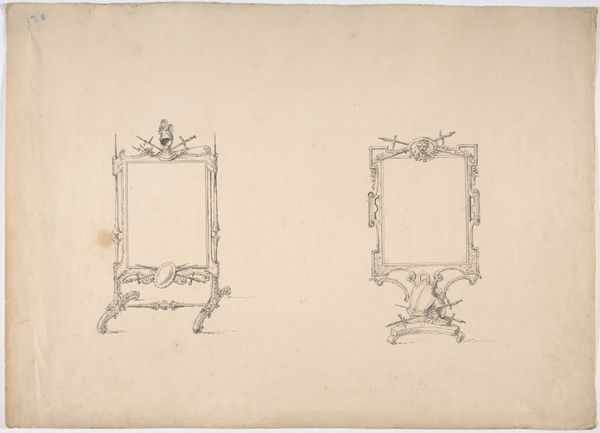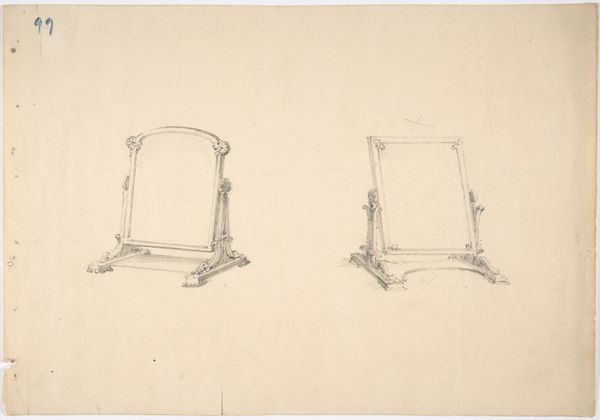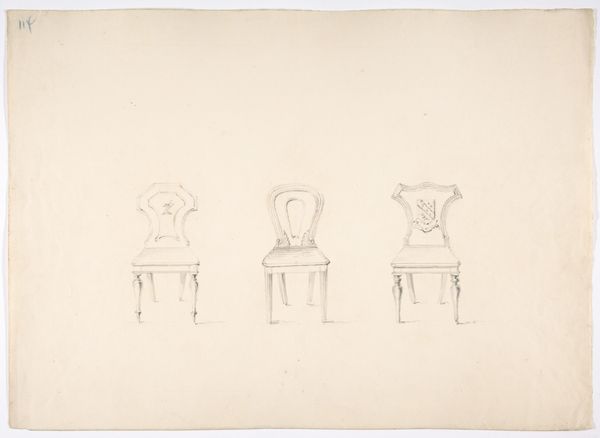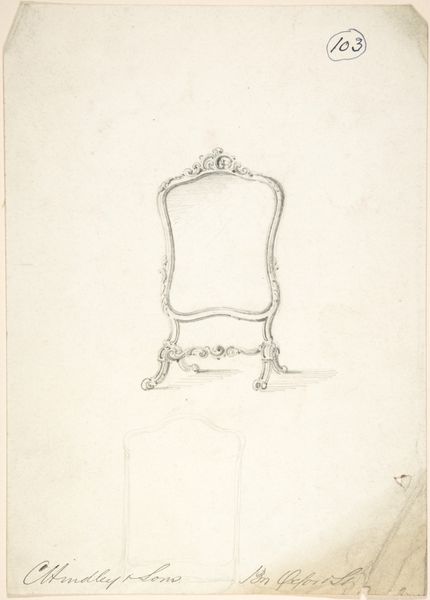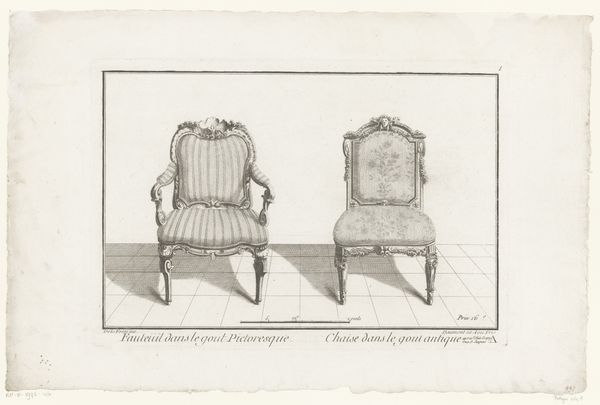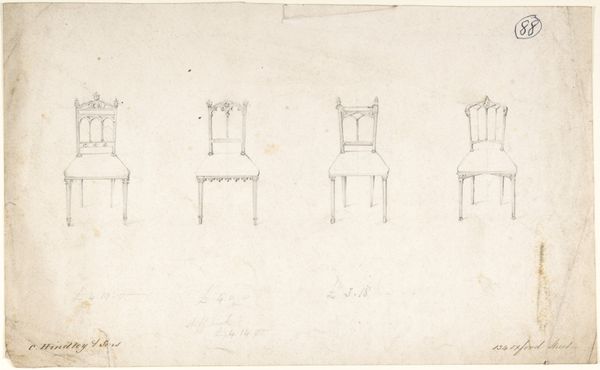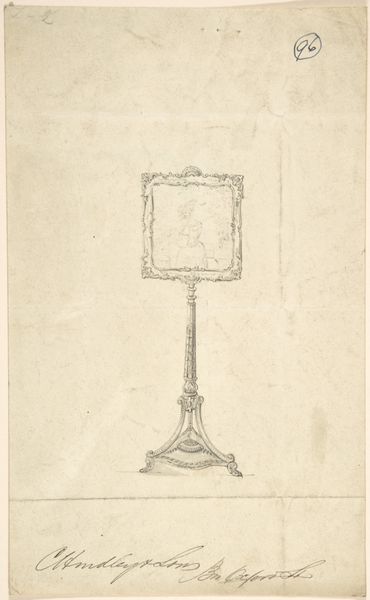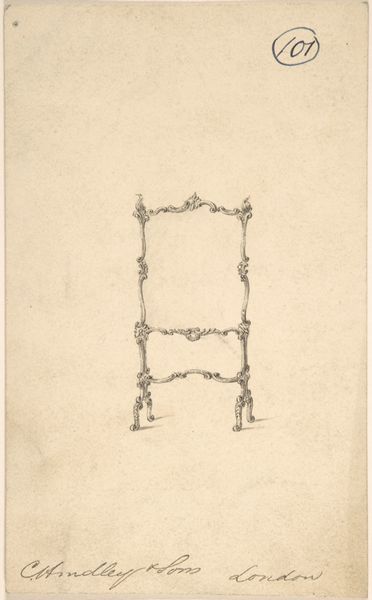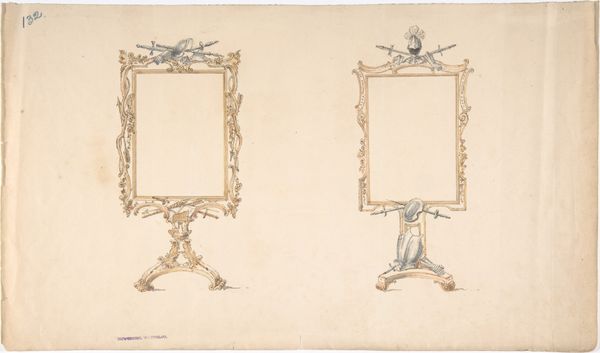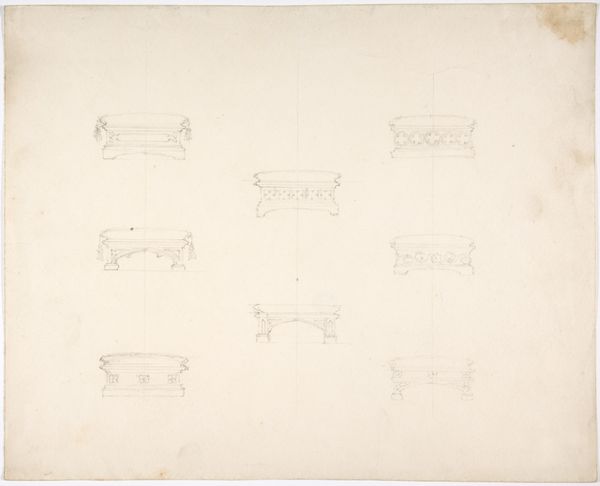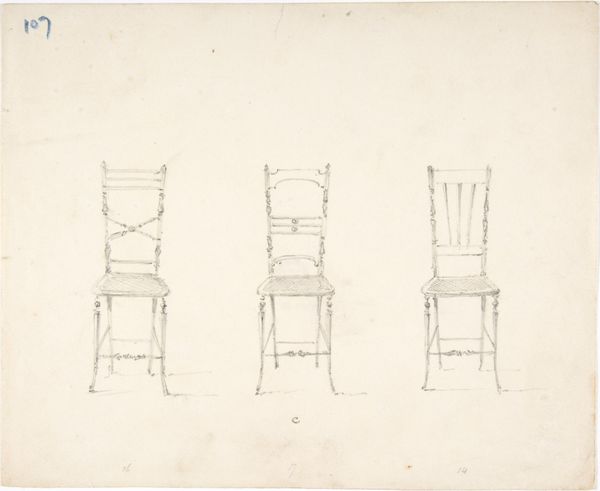
Dimensions: sheet: 9 7/8 x 13 1/8 in. (25.1 x 33.3 cm)
Copyright: Public Domain
Curator: At the Metropolitan Museum, we find "Designs for Three Screens" attributed to Charles Hindley and Sons, dating from 1841 to 1884. It’s a drawing and print combining pencil and ink on paper, showcasing three variations on what appear to be decorative screen designs. Editor: Mmm, austere elegance. My first thought looking at these aged designs is of a faded memory. Like looking through an antique mirror at a room that is both familiar and strangely distant. There's something ghostly and ornate about the light pencil work that draws me in. Curator: The style clearly aligns with the Arts and Crafts movement, doesn’t it? Each screen exhibits an almost obsessive attention to form, a dedication to the decorative line. What I see echoed here are values rooted in a rejection of industrial mass production. The revival of handcraftsmanship as a path towards moral and aesthetic reform. Editor: Absolutely! You know, what fascinates me is that the designs aren’t identical, there are these subtle variations in the ornamentation on the top and feet. To me, they seem like variations of a thought or a motif that the artist is chasing to completion. Perhaps an unfolding narrative, and certainly revealing the maker's process through sketching. It almost invites viewers into their sketchbook. Curator: Indeed. Beyond the obvious aesthetic pleasure, it might speak to the anxieties surrounding rapid industrialization. There's a longing to create objects that contain personal and social value, in the details, so it represents the integrity of handcraft. Editor: You know, looking closely, this really strikes me as a record of experimentation more than finished proposals. The lightness of the pencil, combined with the ink, they really seem like they're thinking through forms on paper. It reminds me that sometimes the most powerful thing in art is the unforced reveal of thought taking form. Curator: And seeing the enduring appeal of decorative art and how this aesthetic informs contemporary design, "Designs for Three Screens" offers not just a window into the past but a mirror reflecting ongoing creative concerns about value, identity, and craftsmanship. Editor: It's a fascinating little moment of time captured and made accessible by something as simple as line and light, faded ink on paper, you almost don't notice, the piece invites contemplation, the details create the story of the sketches.
Comments
No comments
Be the first to comment and join the conversation on the ultimate creative platform.
